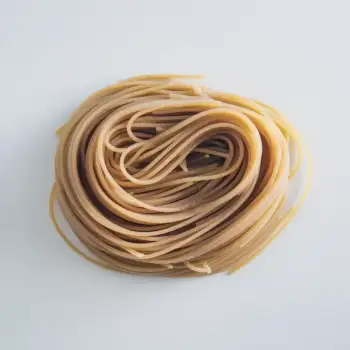


Dry
Linguine pasta that is dried and packaged, typically found in the pasta aisle of grocery stores. This is the most common form of linguine and has a longer shelf life.
Fresh
Linguine pasta that is freshly made and typically found in the refrigerated section of grocery stores. Fresh linguine has a shorter shelf life but a more delicate texture and flavor.
Gluten-Free
Linguine pasta made from alternative flours such as rice, corn, or quinoa, suitable for those with gluten intolerance or celiac disease.
Whole Wheat
Linguine pasta made from whole wheat flour, offering a more robust flavor and higher fiber content.




dry linguine: Barilla
fresh linguine: Buitoni
gluten-free linguine: Barilla
whole wheat linguine: De Cecco

Baking: Although less common, linguine can also be baked in a casserole or pasta bake. This method is typically used for heavier, cheese-based dishes.
Boiling: This is the most common method of cooking linguine. Boil the pasta in a large pot of salted water until it is al dente. Remember to stir occasionally to prevent the pasta from sticking together.
Sautéing: After boiling, linguine can be sautéed with other ingredients to create a flavorful dish. This method is often used in recipes like linguine with clams or linguine with garlic and oil.



